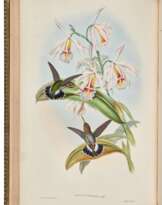John Gould | The birds of Great Britain. London, 1862 1873, 5 volumes, one of the greatest works of British ornithology
28.11.2023 14:00UTC +00:00
Classic
Sold
40640GBP £ 40 640
| Auctioneer | Sotheby´s |
|---|---|
| Event location | United Kingdom, London |
Archive
The auction is completed. No bids can be placed anymore.

ID 1076562
Lot 39 | John Gould | The birds of Great Britain. London, 1862 1873, 5 volumes, one of the greatest works of British ornithology
Estimate value
£ 35 000 – 50 000
The birds of Great Britain. London: Printed by Taylor and Francis for the author, 1862‑1873
FIRST EDITION, 5 volumes, folio (560 x 384mm.), 367 fine hand-coloured lithographed plates after John Gould, Joseph Wolf, and H.C. Richter, dark green morocco gilt by Zaehnsdorf, one text leaf with expert marginal repair, very minor imperfections to contents leaf, isolated thumb smudges, small stains, or light creases to text leaves, the odd plate with a few freckles, binding slightly rubbed
A FINE COPY of what Mullens & Swann call “the most sumptuous and costly of the British bird books,”. The meticulously executed plates were special points of pride for Gould, and his preface leaves us in no doubt why the publication, originally issued in twenty-five parts, took twelve years to complete: “every sky with its varied tints and every feather of each bird were coloured by hand; and when it is considered that nearly two hundred and eighty thousand illustrations in the present work have been so treated, it will most likely cause some astonishment to those who give the subject a thought”.
As ODNB notes, although Gould was not responsible for the final illustrations here (or in his other works), he was intimately involved in every other aspect of the book’s creation from start to finish: “he was the collector (especially in Australia) or purchaser of the specimens, the taxonomist, the publisher, the agent, and the distributor of the parts or volumes. He never claimed he was the artist for these plates, but repeatedly wrote of the ‘rough sketches’ he made from which, with reference to the specimens, his artists painted the finished drawings. The design and natural arrangement of the birds on the plates was due to the genius of John Gould, and a Gould plate has a distinctive beauty and quality”.
Sitwell notes that, although Gould produced volumes on bird species from all over the world, “the most popular of his works is always likely to be Birds of Great Britain’”. In addition to the superb illustrations, which make even the most commonplace warblers and grouse of the region seem grand and even at times exotic, the compositions in this work are especially notable because so many of them depict nests, eggs, and young birds alongside the adult specimens.
As a scientist, Gould (1804-1881) is perhaps the most recognisable name in ornithology after Audubon. Hailing from a modest background, he began his career as a taxidermist and “bird-stuffer” to the Zoological Society, where he was exposed to leading naturalists of the day. His first major publication, A Century of Birds… from the Himalaya Mountains (1830-32) was inspired by a collection of specimens given to the society, and its success led him to focus increasingly on bird illustration. As ODNB concludes, “The sheer number of imperial folio volumes on birds published by Gould has never been surpassed. He was the entrepreneurial naturalist of the 1800s in England, and the pioneer naturalist of Australia”. Mullens & Swann affirm that Gould’s oeuvre is “excelled in extent and beauty by the work of no one other ornithologist, past or present”.
| Artist: | John Gould (1804 - 1881) |
|---|---|
| Auction house category: | Prints, graphics, books |
| Artist: | John Gould (1804 - 1881) |
|---|---|
| Auction house category: | Prints, graphics, books |
| Address of auction |
Sotheby´s 34-35 New Bond Street W1A 2AA London United Kingdom | |
|---|---|---|
| Preview |
| |
| Phone | +44 (0) 20 7293 5000 | |
| Phone | +1 212 606 7000 | |
| Conditions of purchase | Conditions of purchase |
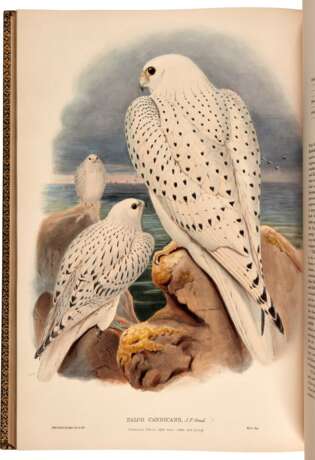
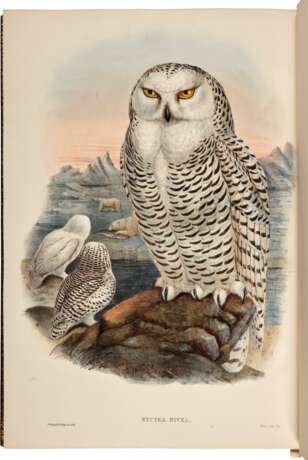
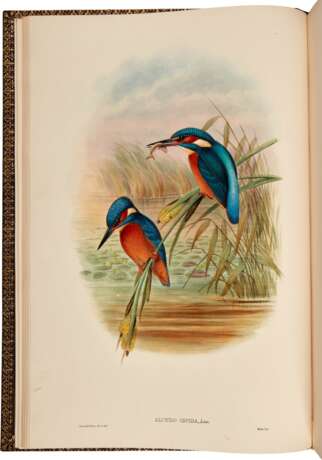
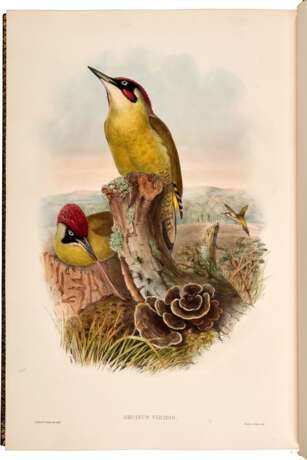
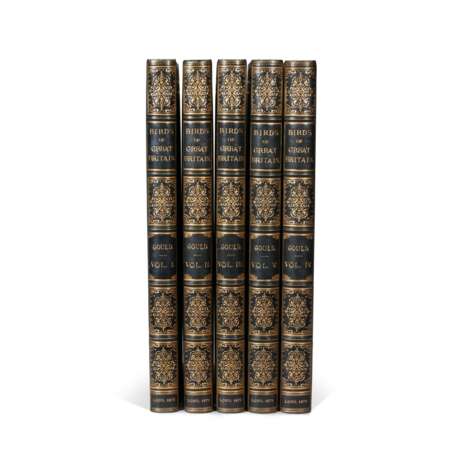
![John Gould | A monograph of the trochilidae, or… humming-birds [with supplement]. London, 1849–1887, 6 volumes](/assets/image/picture_3552940/3073d/kdmit0n6uq1f2b2uhgbazcrfdho9rt1csmh5zubfj-qmaakjbbcjxxkz5sgweau81699088078jpg__fix_162_205.jpeg)
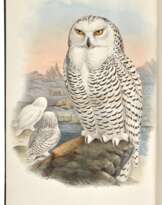
![A Monograph of the Trogonidae, [1836-] 1838, first edition, nineteenth-century green morocco gilt](/assets/image/picture_3101042/1f070/lgrxez7asqvnjxd39vtc1xjna4r3r9nsnueozuvzbjwaguboadbehnustedf-n1693917970jpg__fix_162_205.jpeg)
